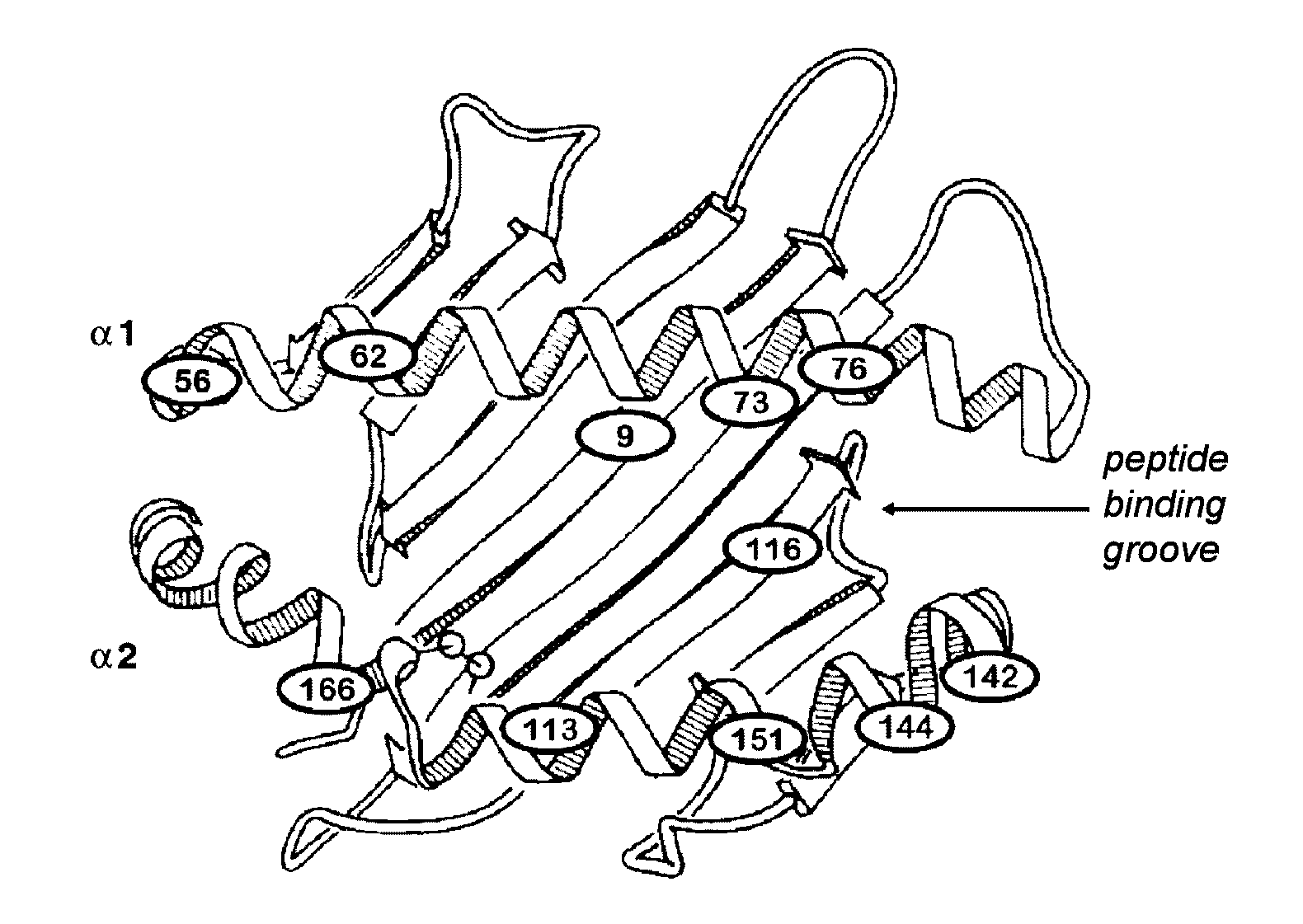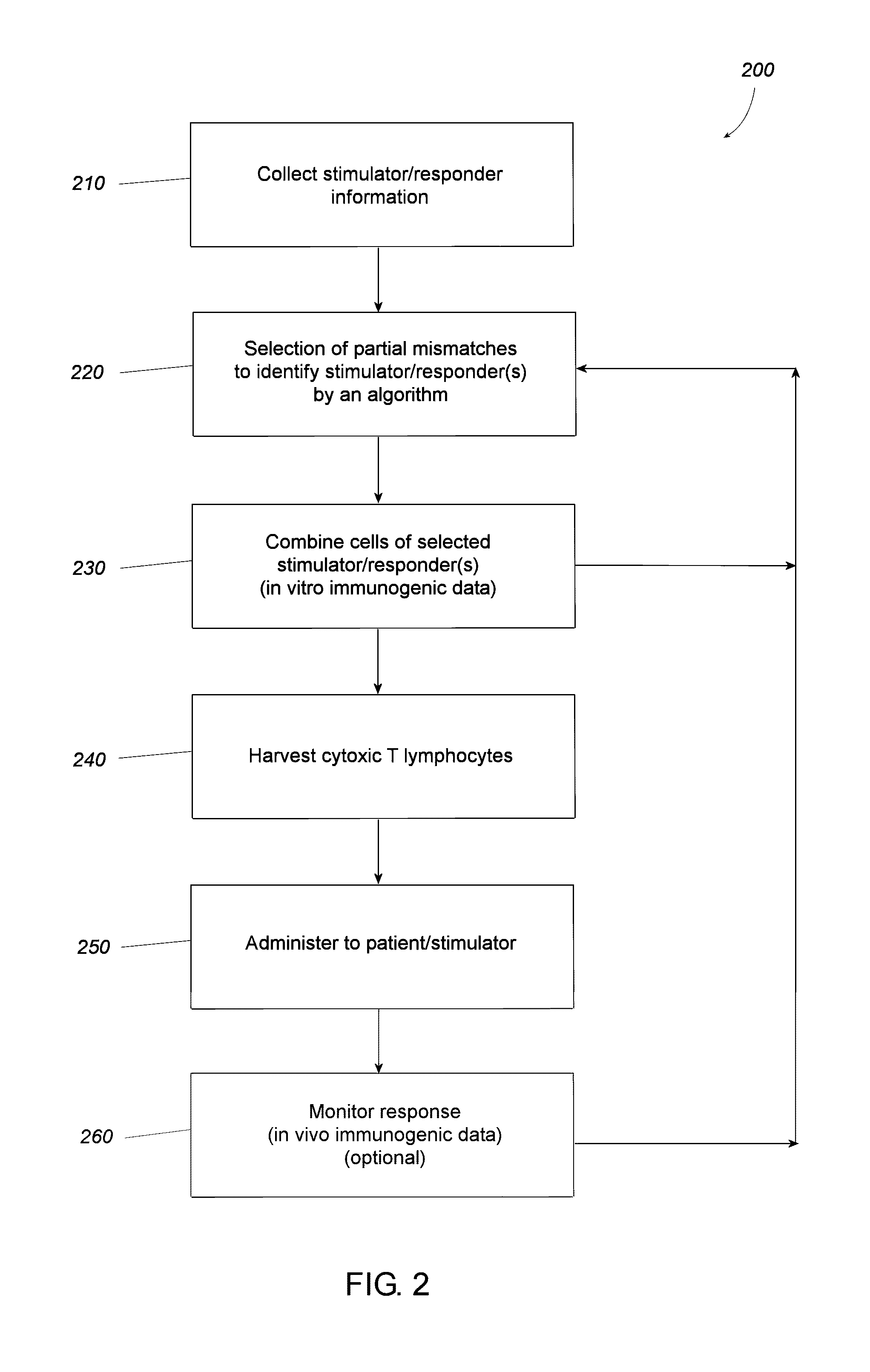Pairing processes for preparing reactive cytotoxic T cells
a technology of process steps, which is applied in the field of painting processes for preparing reactive cytotoxic t cells, can solve the problems of insufficient prediction of current algorithm, and achieve the effects of preventing gvh disease, improving compositions and methods, and enhancing immune response in patients
- Summary
- Abstract
- Description
- Claims
- Application Information
AI Technical Summary
Benefits of technology
Problems solved by technology
Method used
Image
Examples
example 1
Cellular Therapy Studies with Autologous and Allogeneic Effector Cells
[0209]MHC can act as a glioma directed antigen. These studies examine low-passage glioma cell explants by flow cytometry to assess their MHC Class I and II expression. Single cell suspensions were prepared from dissociated primary brain tumor specimens and placed into culture. From these specimens, tumor cells plated and glia did not. Fresh normal brain cells were also derived from temporal tip lobectomy specimens from seizure patients or from autopsy tissue (<8 hr). Brain tumor cell explants expressed high levels of MHC Class I antigens (93-100% positive; mean fluorescence intensity or MFI range 4-662), and little to no MHC Class II (0.1-7% positive; MFI all below 2 or negative). Normal brain did not express, or expressed little, Class I (0.5-15%; MFI<2) or II (1-5%; MFI<2.3) antigens. This suggests that patient MHC can act as a brain tumor directed antigen in the brain. Thus, alloCTL directed against tumor-beari...
example 2
Clinical Experience
[0227]Pilot Phase I Clinical Trial with Intratumorally Administered alloCTL
[0228]Patient profiles. Six recurrent glioma patients (ages 26-46 years) were treated with intracavitary alloCTL and interleukin-2 (IL-2). With toxicity as the primary concern, patients with a variety of histological types were allowed to enroll (see Table 1). The pathologic diagnoses included three recurrent glioblastoma multiformes (GBMs), two anaplastic oligodendrogliomas, and one anaplastic astrocytoma. All had failed treatment consisting of 1 to 3 debulking surgeries and standard radiation (>5000 cGy). All but one also had failed prior chemotherapy and two had additionally failed gamma knife treatment. At entry, the choices were hospice care or experimental therapy.
TABLE 1Patients, Immune Therapy, & Status# ofPatient Number / alloCTLTumor histologycyclesTime to tumor progression / SurvivalBTP1 / Glioblastoma2TTP 3 mos, recurrence atdistant site, died at 4 moBTP2 / Glioblastoma2TTP 3 mos, local...
example 3
Dendritic Cells
[0243]Dendritic Cell Studies. PBMC recovered from melanoma patients were subjected to density gradient centrifugation. The enriched adherent monocyte fraction was cultivated in serum-free AIM-V medium supplemented with rhGM-CSF and rhIL-4 for 6 days. The adherent monocytic cells can be visualized with projections by inverted light microscopy. Inverted light photomicrographs can also depict human monocyte derived, immature DC (based on low CD83 expression) displaying typical membrane projections after one week in vitro cultivation.
[0244]Flow cytometry revealed that these DCs were 98% positive for HLA-DR class II and these DCs were also characterized for other costimulatory molecules (see Table 6). In vitro monocyte-derived DCs were characterized by flow cytometry using four color flow cytometry. The third decade expression (MFI) of HLA-DR, CD11c, CD80, CD83, and CD86 surface expression on the DC was noted. They may be classified as immature based on their lower level C...
PUM
| Property | Measurement | Unit |
|---|---|---|
| Angstrom radius | aaaaa | aaaaa |
| diameter | aaaaa | aaaaa |
| concentration | aaaaa | aaaaa |
Abstract
Description
Claims
Application Information
 Login to View More
Login to View More - R&D
- Intellectual Property
- Life Sciences
- Materials
- Tech Scout
- Unparalleled Data Quality
- Higher Quality Content
- 60% Fewer Hallucinations
Browse by: Latest US Patents, China's latest patents, Technical Efficacy Thesaurus, Application Domain, Technology Topic, Popular Technical Reports.
© 2025 PatSnap. All rights reserved.Legal|Privacy policy|Modern Slavery Act Transparency Statement|Sitemap|About US| Contact US: help@patsnap.com



